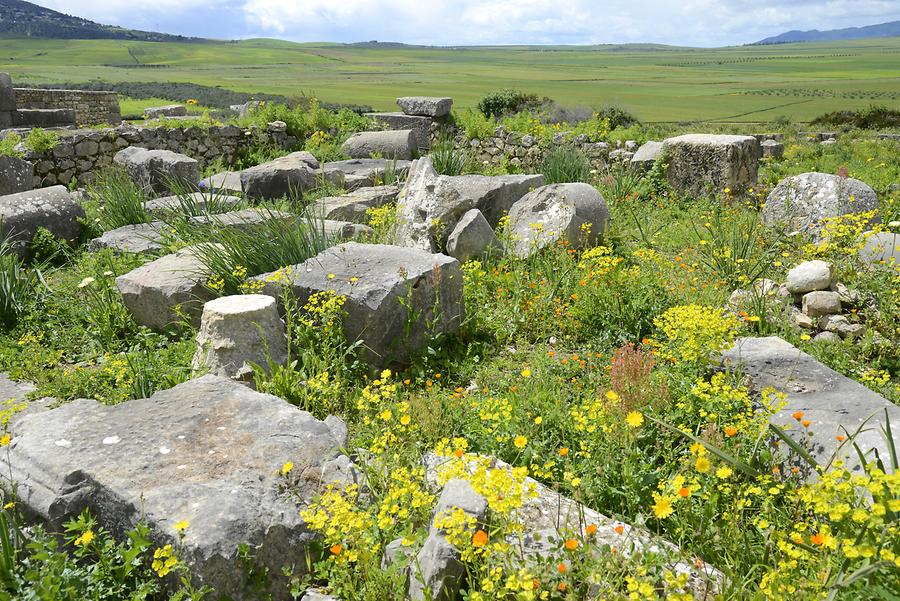Volubilis#

Volubilis, April 2013, © Gerhard Huber, under CC BY-NC 4.0 +Edu
At the foot of the Zerhoun Mountains one enters a territory steeped in history to find the ruins of the Roman city of Volubilis, a UNESCO World Heritage Site. From the 1st to the 3rd century, it was the capital of the Roman province of Mauretania Tingitana. The city owed its prosperity to olive oil, as 50 oil mills are evidence of. In addition, lions and leopards from the nearby Zerhoun Mountains were exported which went fast in the Roman arenas. As Berber raids increased, Volubilis was abandoned by the Romans in 285 AD. The major demolitions were caused by Moulay Ismail, who used the ruined city as a quarry for his palaces in Meknes. A severe earthquake in 1755 sealed the faith of this town.
Geschichtsträchtigen Boden betritt man unterhalb des Zerhoun-Gebirges. Dort liegen die Ruinen der Römerstadt Volubilis, ein UNESCO-Weltkulturerbe. Vom 1. bis zum 3. Jahrhundert war es Hauptstadt der römischen Provinz Mauretania Tingitana. Ihren Wohlstand verdankte die Stadt dem Olivenöl, wie 50 Ölmühlen beweisen. Zudem exportierte man Löwen und Leoparden aus dem nahen Zerhoun-Gebirge, die in den römischen Arenen im wahrsten Sinne des Wortes reissenden Absatz fanden. Mit Zunahme der Berberüberfälle wurde Volubilis 285 n.d.Z. von den Römern aufgegeben. Die größten Zerstörungen gehen auf das Konto von Moulay Ismail, der die Ruinenstadt als Steinbruch für seine Paläste in Meknes benutzte. Ein schweres Erdbeben 1755 besiegelte den Rest.